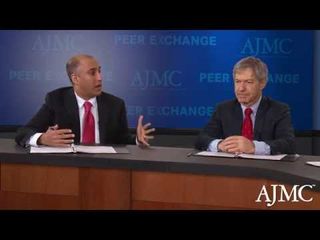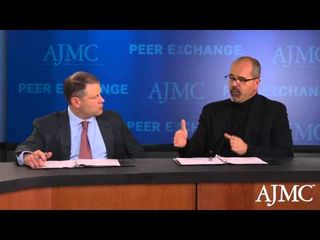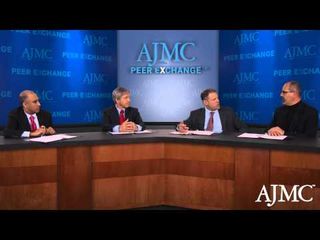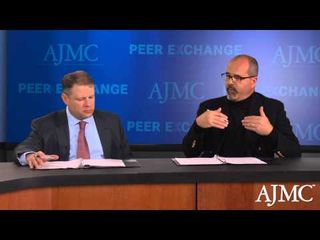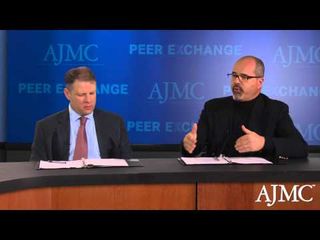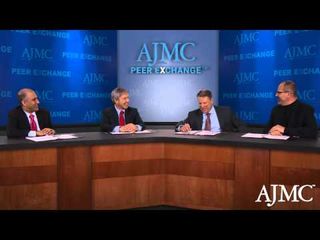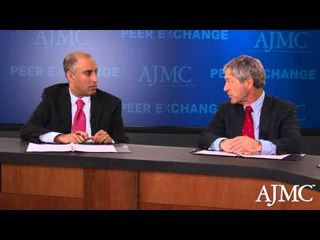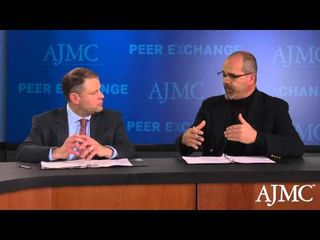
Health Care Cost
Latest News
Latest Videos

CME Content
More News

FDA and ASPR issue policy recommendations to reform US pharmaceutical supply chains; insurer coverage implications of the newly approved therapy in Alzheimer disease; Apple announces new health data sharing features.

The researchers created a model that simulated what would happen when health systems and providers began working together in Medicare accountable care organizations (ACOs) in arrangements that did not extend to outright mergers or acquisitions.

The founder of the Renal Support Network discusses why patients with chronic kidney disease want Congress to change Medicare policy to allow payment for oral treatments for anemia caused by iron deficiency.

Davey Daniel, MD, hematology/medical oncology specialist, Tennessee Oncology, discusses findings of an abstract presented at ASCO 2021 showing a lower total cost of care paid by Medicare for episodes of care for patients in the Oncology Care Model (OCM) enrolled in clinical trials vs those receiving routine care.

Stakeholders discuss barriers and solutions to employer engagement on value assessment, which includes redefining goals to that of the employer and patient, and moving beyond the scope of cost and clinical outcomes.

As patients with chronic myeloid leukemia (CML) fail on treatment and move to later lines of therapy, the impact on their health-related quality of life and the economic burden significantly increase.

As awareness of nonalcoholic fatty liver disease (NAFLD) rises, it is essential to develop and implement a rigorously determined approach to identify patients who will, or will not, benefit from diagnostic evaluation.

Deploying vibration-controlled transient elastography/controlled attenuation parameter devices at the population level is a financially advantageous solution to address the epidemic of fatty liver disease.

Patients with acute myeloid leukemia (AML) who relapse after first-line treatment face a substantial health care resource utilization (HCRU) and cost burden, according to a poster presented at Virtual ISPOR 2021.

Patients with sickle cell disease face substantial health care utilization and impaired health-related quality of life (HRQOL).

In 2016, long working hours were associated with 745,000 deaths and 23.3 million disability-adjusted life-years from ischemic heart disease and stroke combined.

Expanded coverage under a Medicare-Medicaid partnership to treat all prevalent cases of hepatitis C appears to be cost-effective by saving money and improving patient outcomes.

Stakeholders identify the value elements of comprehensive genomic profiling (CGP) they find most important, as well as options for innovative contracts.

As the cost of therapies increases, US health plans are utilizing tools like step therapy, to ensure patients try cheaper alternatives first, and value assessment frameworks, to assist with the decision-making process.

Mark Trusheim, MS, BS, strategic director at the NEW Drug Development ParadIGmS program and visiting scientist at Massachusetts Institute of Technology, explains factors involved when considering whether a therapy would be suitable for performance-based contracting.

With more than 3000 gene therapies in development, payers will have to grapple with the challenges of paying for these innovative but expensive therapies.

An author of a study in the May 2021 issue of The American Journal of Managed Care® describes how the COVID-19 pandemic, the aging of America, and already-existing workforce shortages will further threaten the dual-eligible population unless policy makers reform scope-of-practice laws.

Two posters presented at Virtual ISPOR 2021 analyzed the health care resource utilization and cost of patients with chronic obstructive pulmonary disease (COPD) with pneumonia, as well as the cost savings of treating patients with frequent or severe COPD exacerbations with a fixed-dose triple therapy.

The COVID-19 pandemic brought together the world and taught health systems how to be resilient and adapt to both predictable and unpredictable changes, said the panelists during the plenary on day 1 of Virtual ISPOR 2021.

Vivian Lee, MD, PhD, MBA, president of health platforms, Verily Life Sciences, discusses examples of health economics and outcomes research (HEOR) use amid the pandemic to optimize patient care, as well as what impact HEOR may have in the transition to a value-based health care system.

Genome-wide association studies are building the potential for precision medicine for children with respiratory diseases, but the progress also comes with challenges related to cost and issues with early screening, according to speakers at the ATS 2021 International Conference.

There is a role for pharmacists and pharmacy quality measures in addressing the public health challenge of diabetes, according to speakers at a recent virtual meeting this week.

The researchers undertook the study on diabetes in patients with stroke amid evidence of mortality and hospitalization for some cardiovascular complications declining.

Highlighting the latest ophthalmology-related news reported across MJH Life Sciences™.






